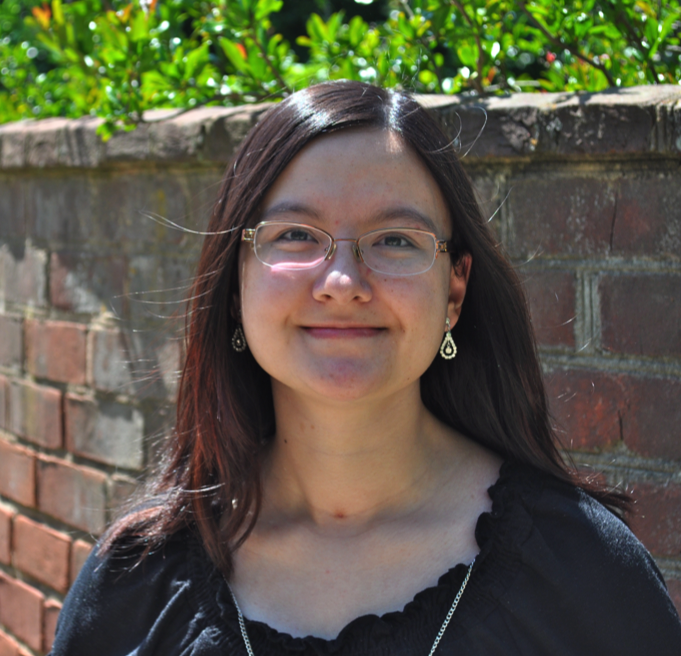O'Donnell, Christine
|
Christine O’Donnell is an Astronomy & Astrophysics Ph.D. candidate at the University of Arizona. Her thesis work focuses on how galaxy halos form, and her research combines theoretical simulations and observational data to understand dark matter accretion and other processes. After her Ph.D., she plans to pursue a career in STEM education. Her participation in the PDP will enable her to be more effective in developing resources and other materials for education and outreach. She also is invested in improving diversity, equity, and inclusion in STEM, and she hopes to bring lessons from PDP’s Equity & Inclusion theme into her teaching and future endeavors. caodonnell@email.arizona.edu |
 |
Name of Teaching Activity: Bayes’d & Confused, Astrostats WEST
Teaching Venue: UCSC WEST Program, September 2018
Learners: 24 community college transfer students.
Reflection on how the activity designed was influenced by research on equity & inclusion in STEM teaching:
One theme within equity & inclusion is providing learners with multiple ways to productively participate. Our learners come from different backgrounds, and thus have different ways of communicating their knowledge. The learning environment and activities available to learners can either constrain or promote their participation in STEM practices [1]. To engage a broad range of learners, we should provide multiple ways to learn, communicate, and succeed and make it clear that all of these ways are equally valid [2]. We decided this theme was especially important with a topic like Bayesian inference: we recognize that we chose a difficult topic and have high expectations for our learners, and we want to make sure we provide them with the support that they need. Part of that support is providing multiple valid approaches.
Specifically, we presented three different ways of completing a Bayesian inference. First, we presented an algebraic method. In my experience, this is typically how Bayesian inference is presented in statistics classes. Second, we presented a graphical approach. Compared with the computational method, this approach is much more visual and has learners map out the different probabilities. Third, we presented a simulation approach using dice rolls that simulate different events to estimate the posterior likelihood. This method is much more tactile and hands-on, and it is similar to how many numerical/computational Bayesian inference programs (e.g., Monte Carlo simulations) function.
Upon reflection, I really appreciated providing learners with these multiple pathways to success. It challenged us (as instructors) to develop methods that we may not have used before, which gave me a deeper understanding of the material. From the learners’ perspective, I think the multiple approaches helped them grasp the complicated material. Unfortunately due to time constraints, no groups could use the simulation method, but many of the groups I facilitated used a combination of the algebraic and graphical approaches - when they got “stuck” on something from one approach, they used another one to figure it out. Other groups found they preferred one specific method, and they could have ownership over making that choice.
Another theme within equity & inclusion is developing an identity as a STEM person, i.e., that learners have a sense that they belong in STEM [3]. The framework applied here focused on developing a STEM identity through (1) competence in the material and learners’ self-efficacy related to that knowledge, (2) performance where learners can demonstrate their knowledge, and (3) recognition of of their competence and performance from others [4]. A related aspect of developing a STEM identity is emphasizing and making STEM research practices explicit to all learners and help them develop agency in engaging in those practices.
I incorporated this theme in planned and unplanned ways. One of the things I thought about before WEST was how to respond when students asked me if they got something correct. I decided to respond to their questions by highlighting STEM research practices. In STEM research, there is no known “correct” answer, so I instead encouraged them to try a different approach to the problem or compare their work with another group (both of which mirror methods used in STEM research). We received feedback about how the learners appreciated how “real” the experience felt, and I hope to find places to incorporate this strategy into future activities. Furthermore, an unplanned bit of facilitation was necessary when some of the learners were late to the inquiry activity on the second day. In order to help these learners catch up and contribute, I had them pair up learners who were present during the morning session. Their partners debriefed them on what they learned and the progress they had made, and it gave these students a chance to have ownership over their accomplishments and receive recognition from others. I think this facilitation choice had a positive impact, and I hope to find ways to purposefully incorporate it into future activities.
---
[1] Ball, T. & Hunter, L., 2013. “Supporting access to science and engineering through scientific argumentation,” in Pedagogy in Higher Education: A Cultural Historical Approach; editors: G. Wells and A. Edwards. New York, NY: Cambridge University Press.
[2] NRC 1999, How People Learn: Brain, Mind, Experience, and School. National Research Council: Committee on Developments in the Science of Learning; editors J.D. Bransford, A.L. Brown, and R.R. Cocking. Washington DC: National Academies Press, http://www.nap.edu/html/howpeople1/
[3] NRC 2007. Taking Science to School: Learning and Teaching Science in Grades K–8. National Research Council: Committee on Science Learning, Kindergarten through Eighth Grade; editors R.A. Duschl and H.A. Schweingruber. Washington DC: National Academies Press, http://www.nap.edu/catalog.php?record_id=11625
[4] Carlone, H.B., & Johnson, A., 2007. “Understanding the science experiences of successful women of color: Science identity as an analytic lens.” Journal of Research in Science Teaching 44 (8) 1187–1218, http://onlinelibrary.wiley.com/doi/10.1002/tea.20237/abstract
